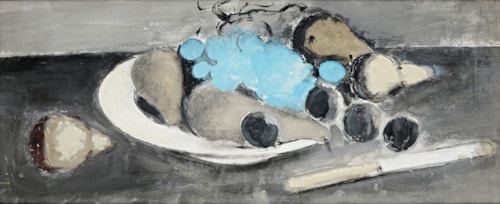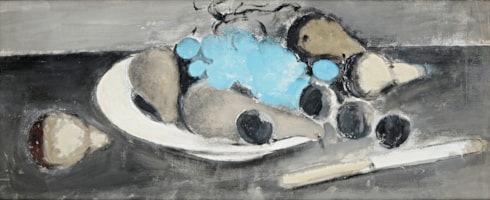
Bernard MENINSKY
Karotopin 1891 - London 1950
Biography
Part of a generation of Anglo-Jewish painters that included David Bomberg, Mark Gertler and Jacob Kramer, Bernard Meninsky was born in the Ukraine and as a baby settled with his family in Liverpool. He studied at the Liverpool School of Art, the Académie Julian in Paris and the Slade School of Art in London, where he arrived in 1912. In 1914 he exhibited his work in the London Group exhibition at the Goupil Gallery and at the New English Art Club. Already a renowned figure draughtsman, Meninsky began teaching drawing at the Central School of Art of Arts and Crafts, the start of a highly successful and lifelong career as an art teacher. His marriage in 1917 and the birth of a son the following year led the artist to produce a series of charming and intimate drawings of his wife nursing their child. Exhibited at the Goupil Gallery in 1919 (the artist’s first one-man show), the drawings served to enrich his reputation and were published in 1920 as Mother and Child: Twenty-eight Drawings by Bernard Meninsky.
The 1920’s found Meninsky painting nudes and landscapes, often of the South of France, which he first visited in 1922. He was elected a member of the New English Art Club in 1923, where he exhibited regularly. Several gallery exhibitions of paintings, gouaches and watercolours were held in London galleries in the 1920's, 1930’s and 1940’s. Nevertheless, Meninsky achieved only a modest amount of critic appreciation in his lifetime, and indeed remains much less well known than many artists of his generation. A shy and somewhat neurotic man, prone to depression and various phobias, Meninsky took his own life in 1950, at the age of 58. The following year a memorial exhibition was organized by the Arts Council in London; this was in fact to be the only retrospective exhibition of Meninsky’s work for the next thirty years, until another was mounted at the Museum of Modern Art in Oxford in 1981. Works by Meninsky are today in the collections of the British Museum, the Tate, the Victoria and Albert Museum and the Imperial War Museum in London, as well as the Arts Council Collection, the National Gallery of Ireland in Dublin, and several regional art galleries and museums.


